Unlucky for some, seen as providing period charm by others – VW’s wide palette of green hues have delighted and dazzled in equal measure over the decades. Here’s a selection of some of the most popular and extravagant greens from the last 60 years…
Pastel Green
We’re more used to seeing Pastel White, but did you know there was a green version as well (below) from the late forties. In fact, it was VW’s first ever green. Given the code L 11 it appeared on cars from July 1948 to January 1954.
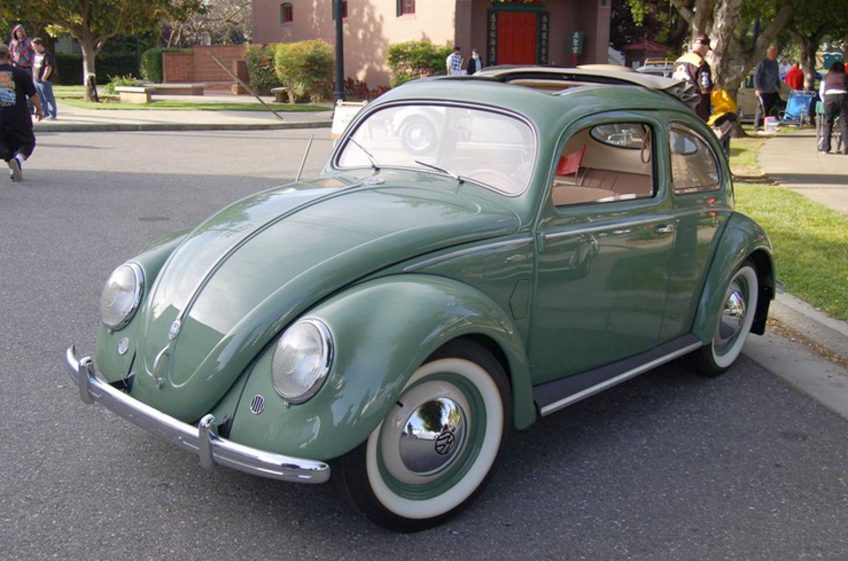
Iceland Green
Introduced in January 1954 and available for just a year, L 213 Iceland Green (below) is a wonderfully retro colour that’s had a bit of a revival recently because it’s just such a nice hue. It’s a shade darker than Reed Green (L 313) which appeared between 1955-56.
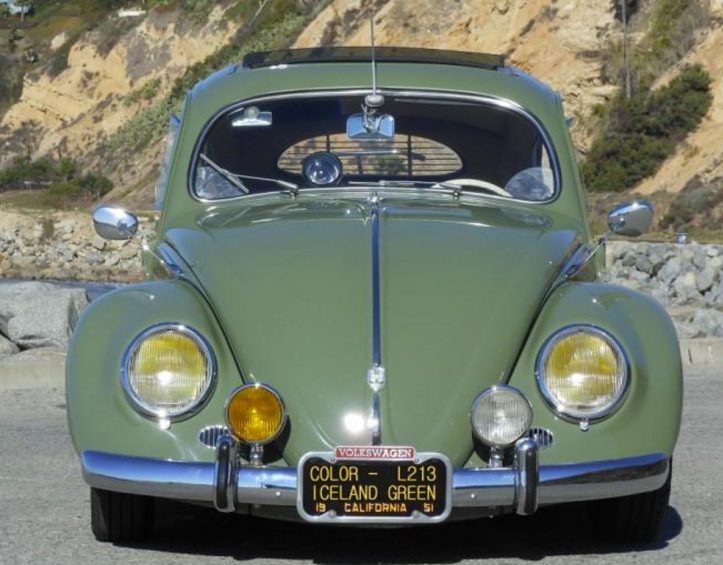
Jungle Green
Not dissimilar to Agave (L 240), Ceramic Green (L 419), Sargasso (L 445) and the later Java Green (L 518), Jungle Green (L 315) made its first appearance in March 1955 and ran for just over a year. My dad had an Oval in this colour!
Diamond Green
Available from April ’56 to July ’57 Diamond Green (L 412) as you can see from the example below was a real dazzler and must have stood out a mile against the backdrop of dowdy blacks, greys and dark greens of the time. It’s got to be one of the first ‘metallics’!

Beryl Green
The wonderfully old fashioned name sums up this period olive hue perfectly. L 478 (below) was available from August 1961 until July 1963. It came after Jade Green (L 349) and Mango Green (L 346).
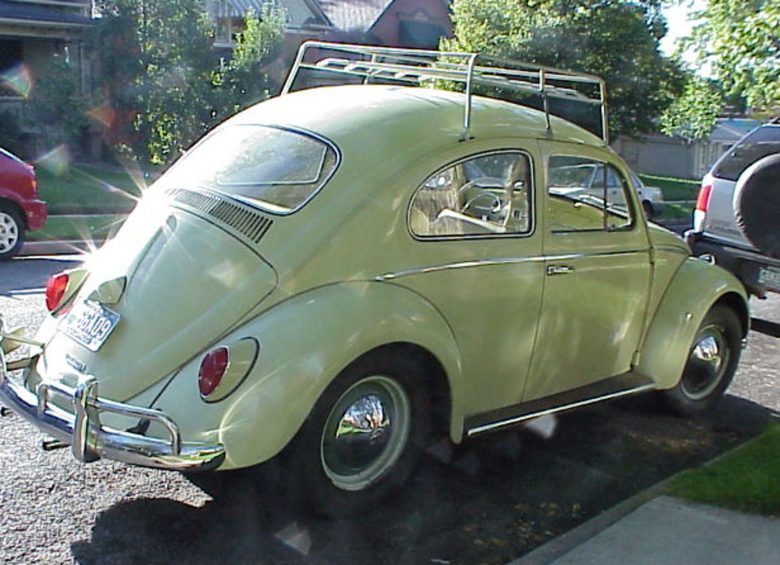
Java Green
The always attractive and incredibly long-lived Java Green (below) was introduced in August 1963 and lasted right up until July 1967, after which it was replaced by the darker Delta Green (L 610) with Peru Green (L 60) appearing in August 1968.
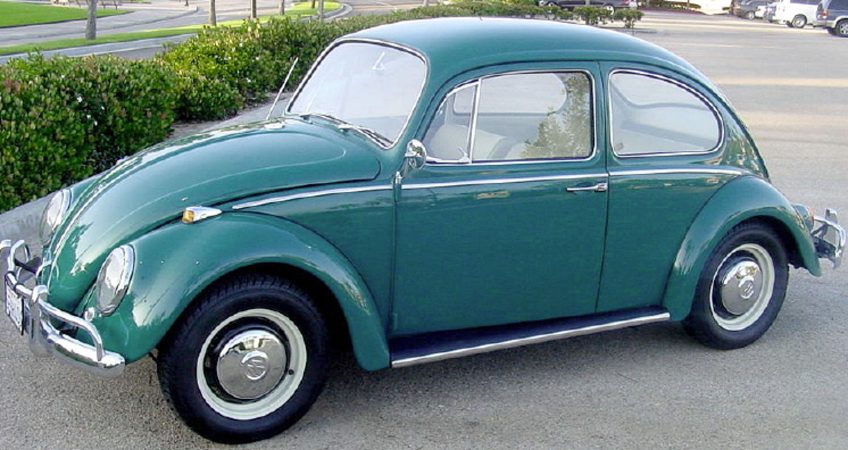
Elm Green
Debuting in the summer of ’69, Elm Green (L 60 D) looked particularly classy when combined with a cream white interior – although most it seems, like the example the below, came with a black combo instead. It was replaced by the not too dissimilar Sumatra Green (L 61 B) in August 1971. Irish Green (L 60E) appeared at around the same time, as did the more vibrant Willow Green (L 63K).

Later greens
The early to mid-’70s heralded a raft of new, vivid greens – including Zambesi (L 64K), the virtually luminous Ravenna (L 65K), Tropical Green (L60 A), Moss Green (L 95V), the somewhat more exotic sounding Ischia Green (L99 M) and the mid-tone Cliff Green (L 61A) making its debut in 1974. Alpine Green (L 61H), Viper (L 98B) and Palma (L95 K) came along in ’75, joined by Bali Green (L 62A) and Manila Green (L 63Y) in ’77. The stylish metallic Colibri Green (L 99Y) appeared in ’79. Lots of late Cabriolet owners (as below) chose this colour.
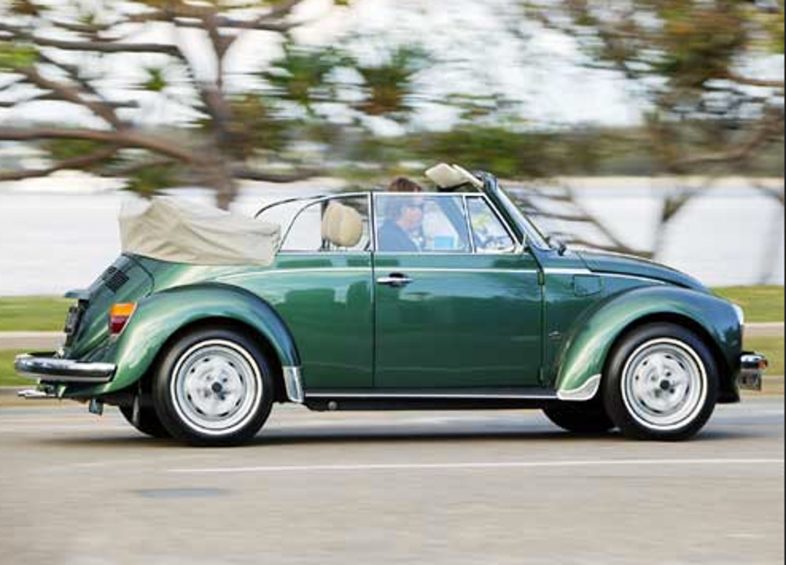
We’ve bound to have missed a few out so let us know of any omissions. Bare in mind, too, colours with the same code seem to vary enomrously and obviously years of bright sunshine can fade paintwork so getting a good match is never easy. In fact, rather than touch up original paint, it usually makes more sense to respray the whole body!
Ian
The opinions expressed here are the personal opinions of the author and do not necessarily represent the views and opinions of VW Heritage.
An acknowledgement goes out to www.thesamba.com for much of this information and some of the images.


There was the bright (too bright!) green on just a few of the GTs, early 70s. An acceptable option to the more common red or yellow. Getting close to the superb more muted green on the Buses.
Ravenna Green. My parents bought a 1973 Super Beetle Cabriolet in that color. We traded it in on a 1974 Super Beetle Cabriolet in the same color. And I still have that car….in a garage.
Woops – sorry – that’s the one at the top!
I don’t know if you include early Golfs but….there are several great greens in that pallet. My 1978 is Siden Green. There is also Rallye Green, Inari Silver which is a light metallic green and Mountain Green. Probably a lot more but I know these ones.
Thanks Van – we’ll look to include the later ones too – or perhaps make a guide to the watercooled Green colours separately.
Andy
I have an inari one and with your comment I just learned to call it SILVER inari because I’ve spent 30+ years calling it GREEN inari and always end up with no results in my search for the original color. I always need to have the color “matched” which they have never accomplished! With the original color in daylight it looked green, under amber streetlights at night it sometimes looked white!! We HAD to look for it by license plate because if we did by color we very often missed it! Thanks!! Hopefully I’ll find it someday!
Turkis Green is one you seemed to have missed out. There seems to be many variations in the named colour. Depending on who mixed the paint & whether it’s celloluse, two pack or more modern water based paints. Also photographs & printed colours vary wildly in magazines.
Turkis is officially a blue. (Turkisblau)
What about Beryl Green! My first Beetle 1958 1200 was that colour. Purchased 1967.
Beryl Green is already mentioned Richard.
I’m restoring a beetle. It’s painted a dark metallic green something like Colibri Green but not sure is ther any other metallic greens. Do u know wat brand of paint Vw would of used.
Lazar Green
I had a Mrk 1 GTI Golf two door in that stunning colour
Hi dose any one know the paint codes for the L213 ICELAND GREEN so that I may get the color made up in Glasurit or PPG just using the L213 wont work they need the formula .
Thank you
Jeff
I have seen a picture of a slightly paler version of Beryl Green on a VW bug and it’s listed as being ‘original German Beryl Green’. Is the original German version different to the one available now? I am getting my camper resprayed and prefer the paler version. Thanks
Hi Steve, It’s possible that the vehicle you have seen has paint that has faded or gone flat over 50 years of sunshine.
I have owned an L313 reed green Feb 56 oval for 40 years. I passed my test in it. As a teenager I briefly thought of doing a baja conversion with a wild colour. Fortunately the colour grew on me so I kept it original throughout. It also put up with my spirited driving. It just looks so crisp in low light, then gleams in sun light. It was my father’s car. He said the colour doesn’t show the dirt, which is true. Watching the colour mixed I saw navy blue, mustard yellow, and white used to create reed green.